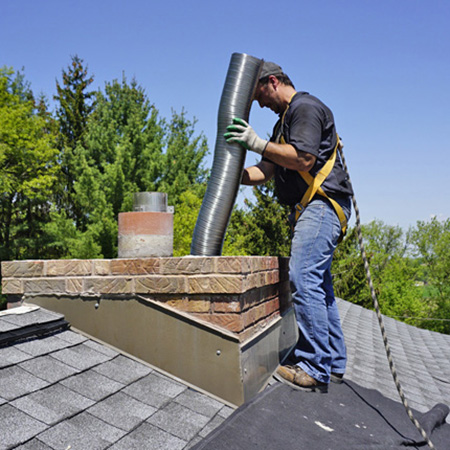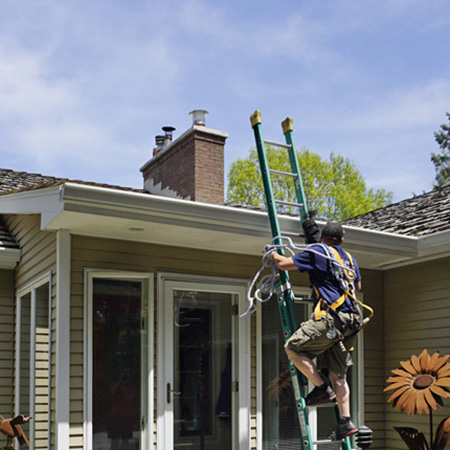Why You Should Have Your Chimney Relined
While the blazing fire inside the fireplace is keeping your family warm, temperatures inside the chimney can be as hot as a brick oven. The high heat exerts a lot of pressure on the internal components of the chimney including the flue liner.
Fire Safety
 The liner is designed to contain the heat to prevent it from spreading to combustible areas of the home and retain the heat to spread warmth around your space. But some chimney liners are more susceptible to damage than others. And the constant battle of high temperatures, flying debris, and even a chimney fire can damage the liner. Relining your chimney will not only protect the masonry, but it will also increase the efficiency of your fireplace.
The liner is designed to contain the heat to prevent it from spreading to combustible areas of the home and retain the heat to spread warmth around your space. But some chimney liners are more susceptible to damage than others. And the constant battle of high temperatures, flying debris, and even a chimney fire can damage the liner. Relining your chimney will not only protect the masonry, but it will also increase the efficiency of your fireplace.
Prevent Carbon Monoxide Poisoning
Chimney liners also act as a safety barrier to help prevent toxic fumes like carbon monoxide from seeping inside your home through the masonry. Carbon monoxide is an odorless and colorless gas that is naturally produced during solid and liquid fuel combustion. And it can have devastating effects. Many people don’t realize they have carbon monoxide poisoning until its too late. Symptoms include nausea, headache, and drowsiness. Homeowners are strongly advised to install a carbon monoxide detector on every level of their home with a solid or liquid fuel heating appliance.
Types of Chimney Liners
There are three main types of chimney liners: cement, clay, and steel. Check with your chimney professional to determine the best chimney liner for your flue and budget.
Cement Liners
Cement liners are cast in place with the material poured directly into the flue. When the cement liner sets it forms an extremely durable liner. Due to its high thermal mass, cement can absorb and store heat at high temperatures making it an excellent insulator. But cement is prone to cracking, especially when aging. Foundation settling can also cause it to crack requiring the chimney to be relined.
Clay Tile Liners
Clay tile liners are the most common type of liner. They are good conductors of heat and are inexpensive. Some types of clay tiles are more fire resistant than others. But one significant disadvantage is that they are prone to cracking at high temperatures. So, if there is a fire in the chimney, any damaged tiles will need to be immediately replaced. Also, clay liners are not recommended for gas fireplaces or heating stoves.
Stainless Steel Liners
Stainless steel liners are considered to be the king of chimney liners. They can absorb extremely high temperatures and do not rust, corrode or crack. UL Listed chimney liners can be used with both solid fuel and liquid fuel heating appliances. They will continue to provide heat long after the fire is out making them extremely efficient.
 Chimney Inspection
Chimney Inspection
It’s essential to have a chimney inspection before having your chimney relined. During the inspection, our certified chimney professional will examine the flue. If your chimney needs relining, we will give you the best options available for your size flue and budget.


 (563) 582-5156
(563) 582-5156


